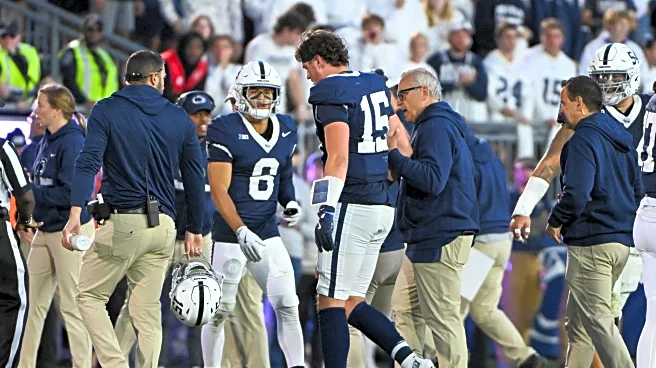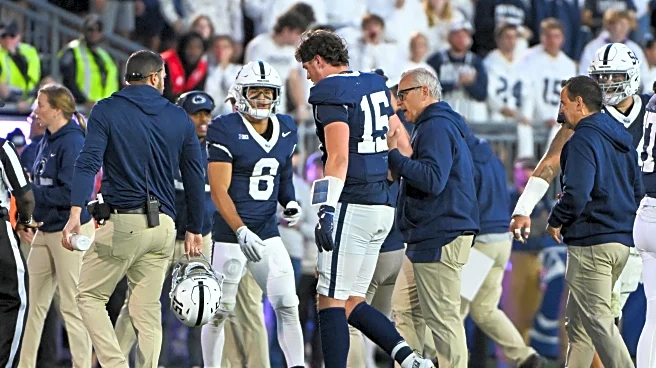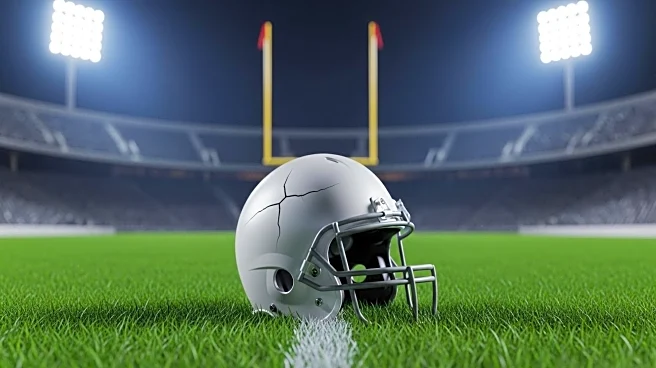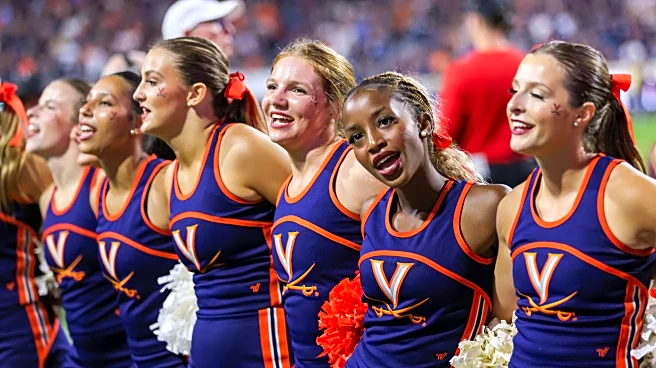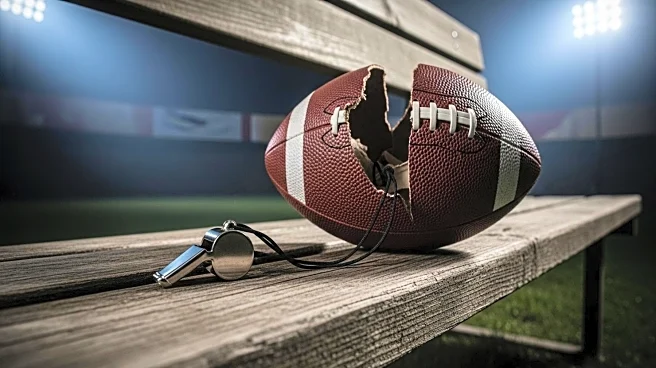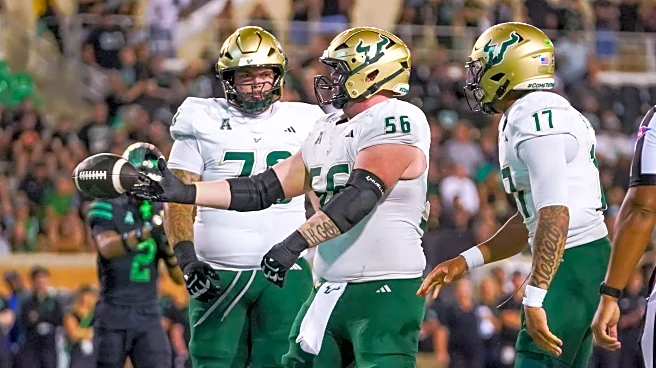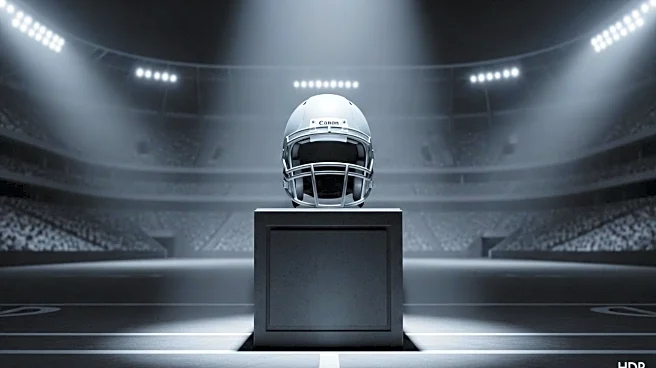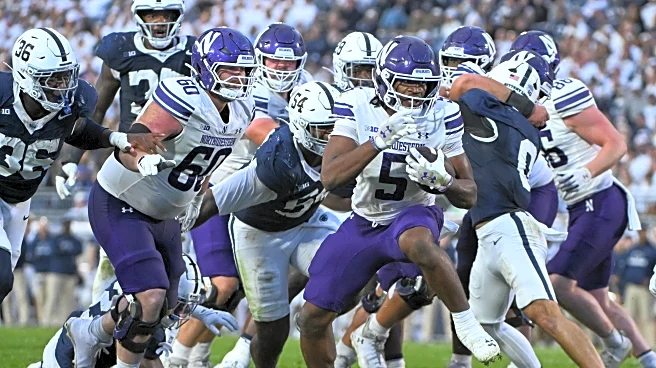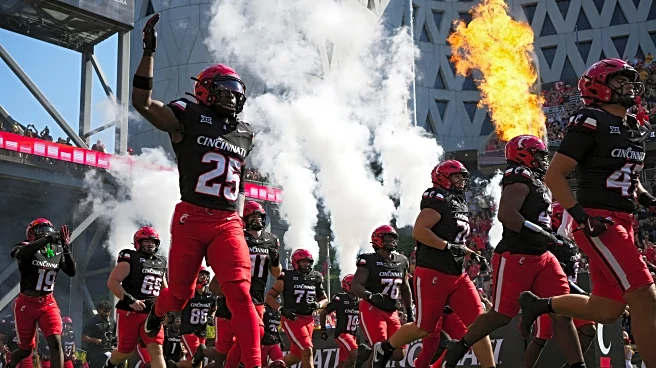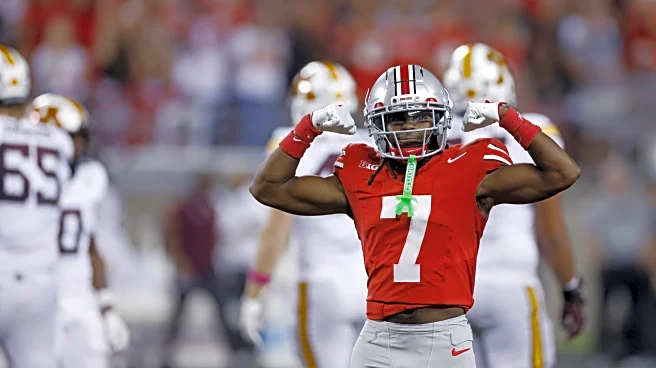What's Happening?
Penn State quarterback Drew Allar has been ruled out for the remainder of the season following an apparent leg injury sustained during a game against Northwestern. Allar, who returned for his senior season with aspirations of leading the Nittany Lions to a national championship, was injured on a third-down play late in the game, which ended in a 22-21 loss for Penn State. The injury marks a significant setback for the team, which has experienced a series of defeats, including losses to Oregon and UCLA. Allar's absence leaves Penn State with a 3-3 record and 0-3 in the Big Ten, necessitating a shift to backup quarterback Ethan Grunkemeyer as they aim to qualify for a bowl game.
Why It's Important?
Drew Allar's injury is a critical blow to Penn State's football program, which had high hopes for a successful season. Allar's leadership and performance were pivotal to the team's strategy, and his absence could affect team morale and performance. The Nittany Lions now face challenging upcoming games against top-ranked teams like Ohio State and Michigan State, which could further impact their standings. The injury also highlights the vulnerability of sports teams to unexpected changes, emphasizing the importance of depth and adaptability in collegiate athletics.
What's Next?
With Allar sidelined, Penn State will rely on Ethan Grunkemeyer to lead the team through the remainder of the season. The Nittany Lions have crucial games ahead, including matchups against Iowa, Ohio State, Michigan State, and Indiana. Coach James Franklin has emphasized the need for the team to stick together and focus on overcoming adversity. The team's ability to adapt to this change will be tested as they strive to secure a bowl game appearance despite the setbacks.
Beyond the Headlines
Allar's injury may have broader implications for Penn State's recruitment and future seasons. The team's performance in the absence of their star quarterback could influence prospective players' decisions and the program's reputation. Additionally, the situation underscores the physical demands and risks associated with collegiate sports, prompting discussions on player safety and support systems.

